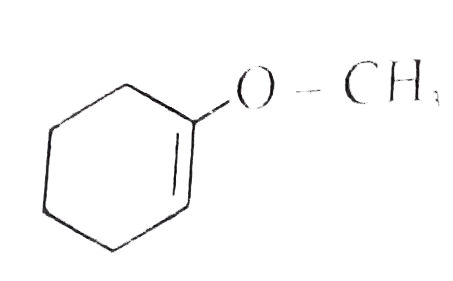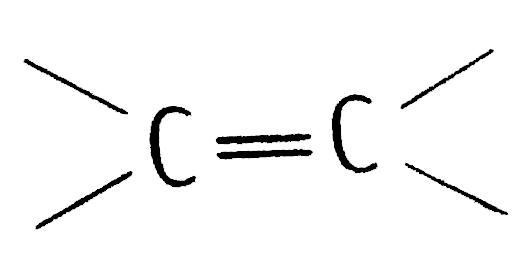Electrophilic additions reactions proceed in two steps. The first step involves the additions of an electrophile. Name the type of intermediate formed in the first step of the following addition reaction H3C−HC=CH2+H+→?
3∘ carbanion
1∘ carbocation
2∘ carbocation
1∘ carbanion
The correct Answer is:C
When electrophile attackes CH3−CH=CH2 delocalisation of electrons can take place, in two possible ways

As 2∘ carbocation is more stable than 1∘ carbocations thus first additions is more feasible
Note. Stability of carbocations is the basis of Markownikoff's rule
Topper's Solved these Questions
- ORGANIC CHEMISTRY : SOME BASIC PRINCIPLES AND TECHNIQUESBOOK - NCERT EXEMPLAR ENGLISHCHAPTER - ORGANIC CHEMISTRY : SOME BASIC PRINCIPLES AND TECHNIQUESEXERCISE - Short Answer type question
27 Videos
- ORGANIC CHEMISTRY : SOME BASIC PRINCIPLES AND TECHNIQUESBOOK - NCERT EXEMPLAR ENGLISHCHAPTER - ORGANIC CHEMISTRY : SOME BASIC PRINCIPLES AND TECHNIQUESEXERCISE - Matching the columns
5 Videos
- HYDROGENBOOK - NCERT EXEMPLAR ENGLISHCHAPTER - HYDROGENEXERCISE - LONG ANSWER TYPE QUESTIONS
8 Videos
- REDOX REACTIONSBOOK - NCERT EXEMPLAR ENGLISHCHAPTER - REDOX REACTIONSEXERCISE - LONG ANSWER TYPE QUESTIONS
6 Videos
Similar Questions
Knowledge Check
Electrophilic addition reactions proceed in two steps. The first step involves the addition of an electrophile. Name the type of intermediate formed in the first step of the following addition reaction.
H3C−HC=CH2+H+→?A2∘ carbanionB1∘ carbocationC2∘ carbocationD1∘ carbanionIn SN1 reaction, the first step involves the formation of:
Afree radicalBcarbanionCcarbocationDfinal productComplete the following free radical addition equation
.RO+CH2=CH−CH3→AROCH2CH2.CH2BROH+CH2=CH−.CH2CROCH=CH−.CH2+H2DROCH2.CH−CH3
Addition of HCl to an alkene proceeds in two steps. The first step is the attack of H+ ion to
 portion which can be shown as
portion which can be shown as
View SolutionAlkenes undergo electrophilic addition reactions. Electrophilic addition to unsymmetrical alkenes involve the formation of a more stable carbocation intermediate in the first step which is rate determining and carbocation is then attacked by a nuclephile to form product
 +H2OH2SO4−−−→ Product
+H2OH2SO4−−−→ Product
View SolutionAlkenes undergo electrophilic addition reactions. Electrophilic addition to unsymmetrical alkenes involve the formation of a more stable carbocation intermediate in the first step which is rate determining and carbocation is then attacked by a nuclephile to form product
Which one of the following alkene reacts most readily with HCI?
View SolutionAlkenes undergo electrophilic addition reactions. Electrophilic addition to unsymmetrical alkenes involve the formation of a more stable carbocation intermediate in the first step which is rate determining and carbocation is then attacked by a nuclephile to form product
HO−CH2−CH2−CH2−CH=CH2I2−−−−−→NaHCO3 major product formed is
View SolutionThe end product of the following reaction
CH3MgBr+CH2=CH−CHOH3O+−−−→ is :
View Solution

 portion which can be shown as
portion which can be shown as